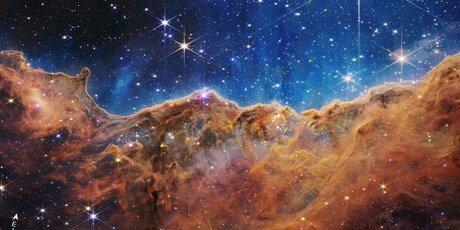Das James-Webb-Weltraumteleskop
spektakuläre Bilder zu sehen im Zeiss-Großplanetarium
Over 13 billion years back in time: The James Webb Space Telescope has published the first spectacular images from the depths of the universe. These can be seen from tomorrow in the "Star Hour" in the Zeiss Large Planetarium.
ESA, NASA and CSA have published the first scientific images of the James Webb Space Telescope, which provide insights into the universe in unprecedented sharpness. "Webb" will explore, among other things, the oldest galaxies in the universe. The Planetarium Berlin Foundation will show the images in its "Sternstunde" event.
The telescope, built on behalf of the space agencies of Europe, the United States and Canada, is the largest observatory ever sent into space. Among other things, scientists hope the images will provide insights into the time after the Big Bang, some 13.8 billion years ago. The "James Webb" telescope was launched into space on December 25, 2021. It was developed over a period of around 30 years and cost the equivalent of around 8.8 billion euros. It follows the Hubble telescope, which was in operation for more than 30 years.
